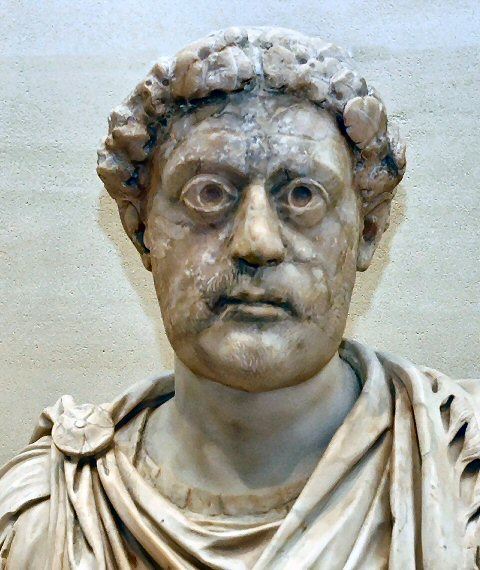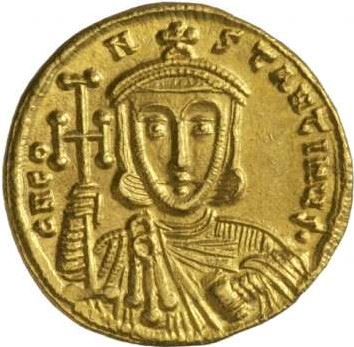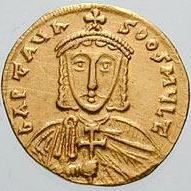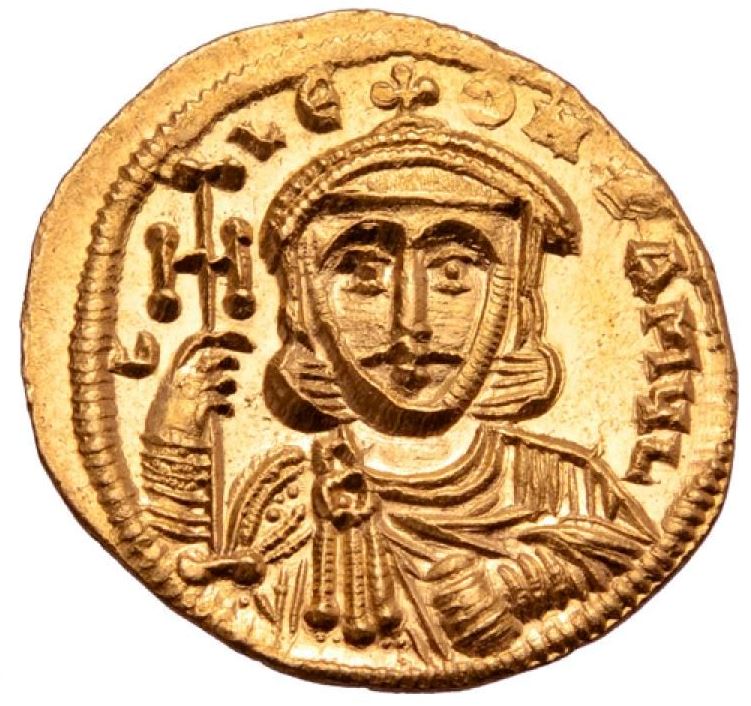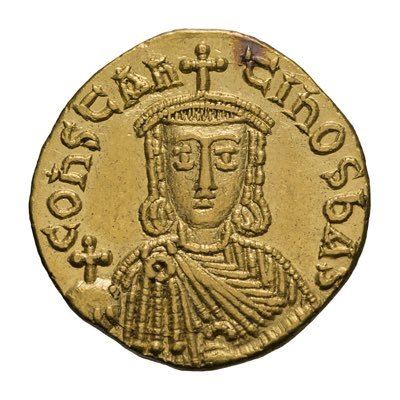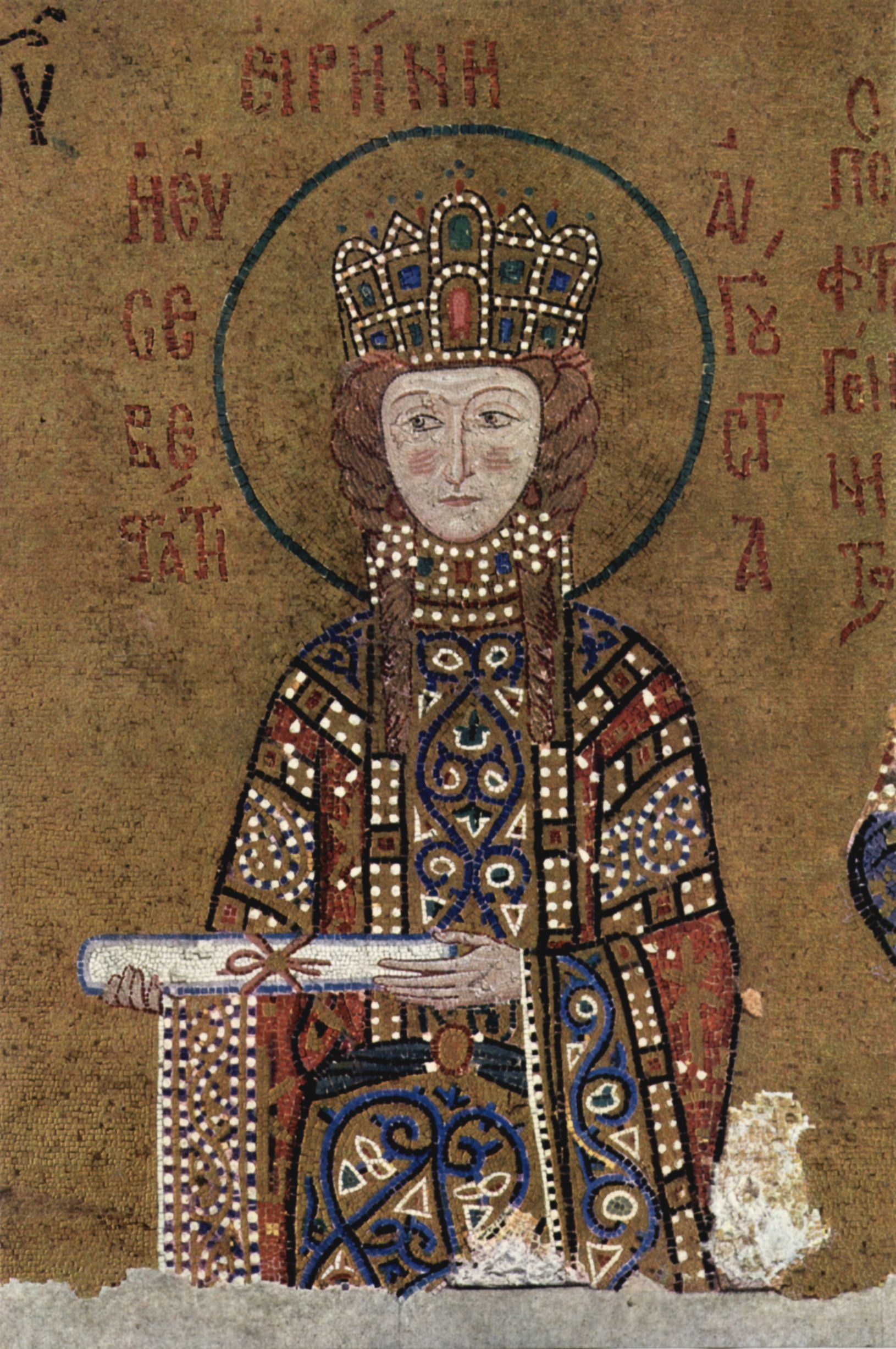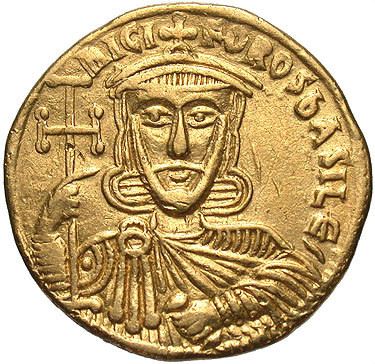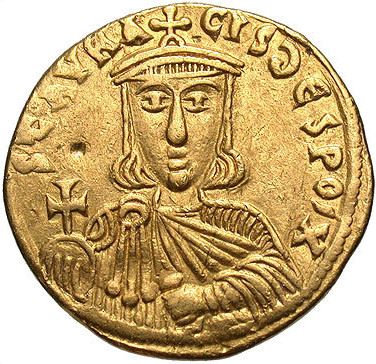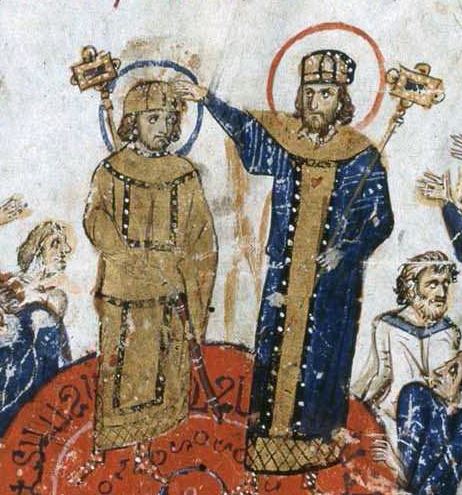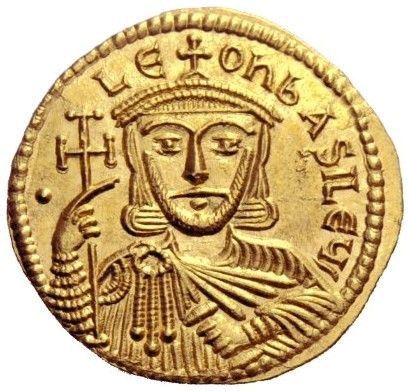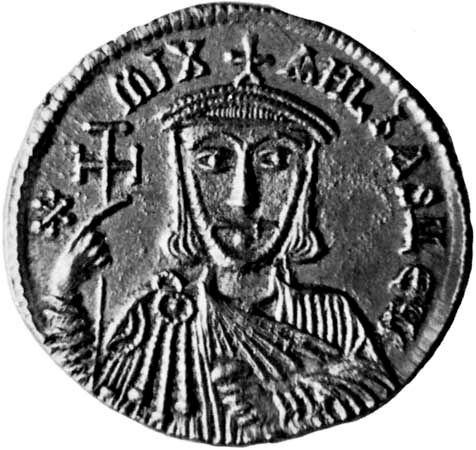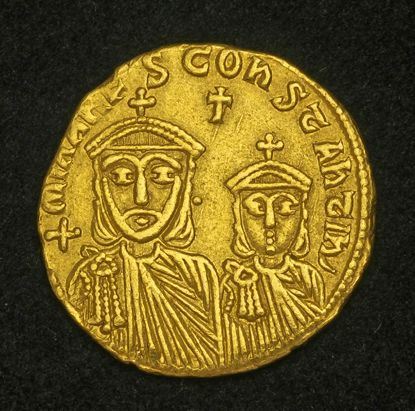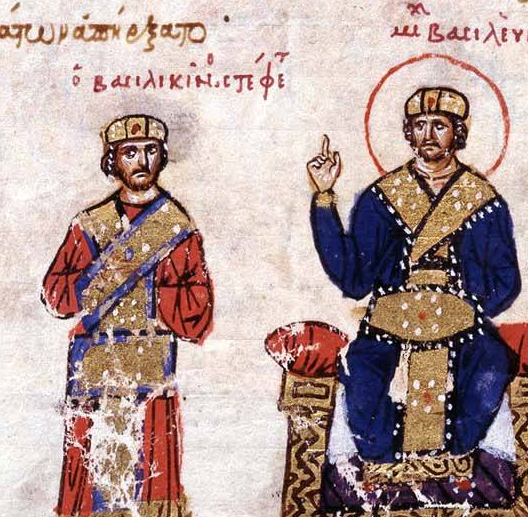The period from 717 to 867 was dominated by a central political issue; the prohibition of the use of religions images – icons – also known as ‘Iconoclasm’. The debate revolved around the two natures of Jesus; human and divine.
An immediate precursor seems to have been a large volcanic eruption in the summer of 726 in the Aegean Sea probably causing tsunamis and great loss of life. Many interpreted this as a judgement on the Empire by God, and decided that use of images had been the offence.
In 787, a new ecumenical council in Nicea reversed the decrees of the previous iconoclast council held at Constantinople and Hieria, with papal approval. This lasted only for a short time, however, as Emperor Leo V instituted a second period of Iconoclasm in 815, again possibly motivated by military failures seen as indicators of divine displeasure. This second period lasted until 842, when Empress Theodora reversed the decision. In 867, the ascension of Basil I would mark the beginning of the Macedonian Dynasty, which would rule for the next two and a half centuries.
An immediate precursor seems to have been a large volcanic eruption in the summer of 726 in the Aegean Sea probably causing tsunamis and great loss of life. Many interpreted this as a judgement on the Empire by God, and decided that use of images had been the offence.
In 787, a new ecumenical council in Nicea reversed the decrees of the previous iconoclast council held at Constantinople and Hieria, with papal approval. This lasted only for a short time, however, as Emperor Leo V instituted a second period of Iconoclasm in 815, again possibly motivated by military failures seen as indicators of divine displeasure. This second period lasted until 842, when Empress Theodora reversed the decision. In 867, the ascension of Basil I would mark the beginning of the Macedonian Dynasty, which would rule for the next two and a half centuries.
Leo III was Byzantine Emperor from 717 until his death in 741. He put an end to the Twenty Years' Anarchy, a period of great instability in the Byzantine Empire between 695 and 717, marked by the rapid succession of several emperors to the throne.
Leo, whose original name was Konon, was born in Germanikeia in the Syrian province of Commagene. He was appointed commander (stratēgos) of th...
Leo, whose original name was Konon, was born in Germanikeia in the Syrian province of Commagene. He was appointed commander (stratēgos) of th...
Constantine V was Byzantine emperor from 741 to 775. He was the son of his predecessor, Leo II.
Constantine V continued his father's iconoclast policies, and in 754 convened a synod in Hieria. The council approved of Constantine's religious policy and secured the election of a new Iconoclast patriarch, but refused to follow in all of Constantine's views. Nevertheless, the synod was foll...
Constantine V continued his father's iconoclast policies, and in 754 convened a synod in Hieria. The council approved of Constantine's religious policy and secured the election of a new Iconoclast patriarch, but refused to follow in all of Constantine's views. Nevertheless, the synod was foll...
Artabasdos was a Byzantine general of Armenian descent who seized the throne from June 741 or 742 until November 743. His reign constitutes a usurpation against Constantine V, who had retained control of several themes in Asia Minor.
Artabasdos abandoned his predecessor's religious policy of Iconoclasm and restored Orthodoxy with some support, including that of Pope Zacharias. Soon afte...
Artabasdos abandoned his predecessor's religious policy of Iconoclasm and restored Orthodoxy with some support, including that of Pope Zacharias. Soon afte...
Leo IV was Byzantine Emperor from 775 to 780 AD. He was born to Emperor Constantine V and Empress Tzitzak in 750. He was elevated to caesar the next year, in 751. When Constantine V died in September 775, while campaigning against the Bulgarians, Leo IV became senior emperor on 14 September 775.
Leo was by this point suffering from tuberculosis, which, combined with the infancy of his ...
Leo was by this point suffering from tuberculosis, which, combined with the infancy of his ...
Constantine VI was Byzantine Emperor from 780 to 797. The only child of Emperor Leo IV, Constantine was named co-emperor with him at the age of five in 776 and succeeded him as sole Emperor in 780, aged nine. His mother Irene exercised control over him as regent until 790, assisted by her chief minister Staurakios.
Though the regency lost power when Constantine reached maturity in 790, ...
Though the regency lost power when Constantine reached maturity in 790, ...
Irene was Byzantine empress consort by marriage to Leo IV from 775 to 780, Byzantine regent during the minority of her son Constantine VI from 780 until 790, and finally ruling Byzantine (Eastern Roman) empress from 797 to 802. She is best known for ending Iconoclasm.
Although it is often asserted that, as monarch, Irene called herself "basileus" (βασιλεύς), 'emperor', rather than "basi...
Although it is often asserted that, as monarch, Irene called herself "basileus" (βασιλεύς), 'emperor', rather than "basi...
Nikephoros I was Byzantine Emperor from 802 to 811, when he was killed in the Battle of Pliska. He is sometimes called "the Logothete" due to his previous position as Minister of Finance (Genikos Logothetes).
Nikephoros embarked on a general reorganization of the Roman Empire, creating new themes in the Balkans and strengthening the frontiers. Needing large sums to increase his military...
Nikephoros embarked on a general reorganization of the Roman Empire, creating new themes in the Balkans and strengthening the frontiers. Needing large sums to increase his military...
Staurakios was Byzantine Emperor from 26 July to 2 October 811. He was born some time after 778 AD, to Nikephoros I and an unknown woman. Nikephoros seized the throne of the Byzantine Empire from Irene of Athens in 802, and elevated Staurakios to co-emperor in December 803.
After Nikephoros fell in the Battle of Pliska on 26 July 811, Staurakios was declared emperor, despite his severe ...
After Nikephoros fell in the Battle of Pliska on 26 July 811, Staurakios was declared emperor, despite his severe ...
Michael I was Byzantine Emperor from 811 to 813. He was the son of the patrician Theophylact Rhangabe, the admiral of the Aegean fleet. He married Prokopia, the daughter of the future Emperor Nikephoros I, and received the high court dignity of kouropalatēs after his father-in-law's accession in 802.
Michael survived Nikephoros' disastrous campaign against Krum of Bulgaria, and was cons...
Michael survived Nikephoros' disastrous campaign against Krum of Bulgaria, and was cons...
Leo V was Emperor of the Byzantine Empire from 813 to 820. A senior general, he forced his predecessor, Michael I Rangabe, to abdicate and assumed the throne.
With the iconodule policy of his predecessors associated with defeats at the hands of Bulgarians and Arabs, Leo V reinstituted Iconoclasm after deposing patriarch Nikephoros and convoking a synod at Constantinople in 815. The Empe...
With the iconodule policy of his predecessors associated with defeats at the hands of Bulgarians and Arabs, Leo V reinstituted Iconoclasm after deposing patriarch Nikephoros and convoking a synod at Constantinople in 815. The Empe...
Michael II reigned as Byzantine Emperor from 25 December 820 to his death on 2 October 829, the first ruler of the Phrygian or Amorian dynasty.
Born in Amorium, Michael was a soldier, rising to high rank along with his colleague Leo V the Armenian. He helped Leo overthrow and take the place of Emperor Michael I Rangabe. However, after they fell out Leo sentenced Michael to death. Micha...
Born in Amorium, Michael was a soldier, rising to high rank along with his colleague Leo V the Armenian. He helped Leo overthrow and take the place of Emperor Michael I Rangabe. However, after they fell out Leo sentenced Michael to death. Micha...
Theophilos was the Byzantine Emperor from 829 until his death in 842. He was the second emperor of the Amorian dynasty and the last emperor to support iconoclasm.
Theophilos personally led the armies in his lifelong war against the Arabs, beginning in 831. In 837 Theophilos led a vast army of 70,000 men towards Mesopotamia and captured Melitene and Arsamosata. Theophilos returned to Con...
Theophilos personally led the armies in his lifelong war against the Arabs, beginning in 831. In 837 Theophilos led a vast army of 70,000 men towards Mesopotamia and captured Melitene and Arsamosata. Theophilos returned to Con...
Michael III was Byzantine Emperor from 842 to 867. HeI was the third and traditionally last member of the Amorian (or Phrygian) dynasty.
Michael was the youngest child of the emperor Theophilos and his empress Theodora. Already crowned co-ruler by his father in his infancy in 840, Michael had just turned two years old when his father died and Michael succeeded him as sole emperor on Jan...
Michael was the youngest child of the emperor Theophilos and his empress Theodora. Already crowned co-ruler by his father in his infancy in 840, Michael had just turned two years old when his father died and Michael succeeded him as sole emperor on Jan...

